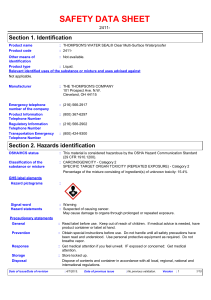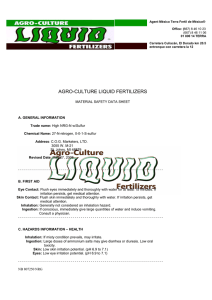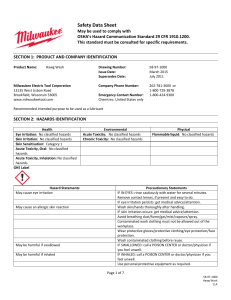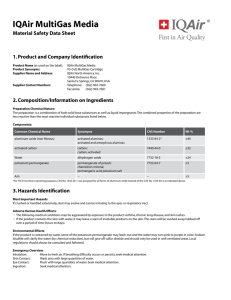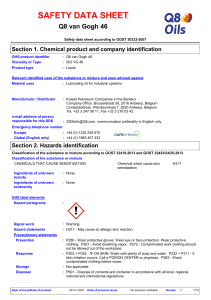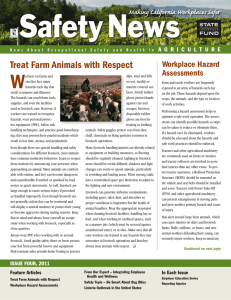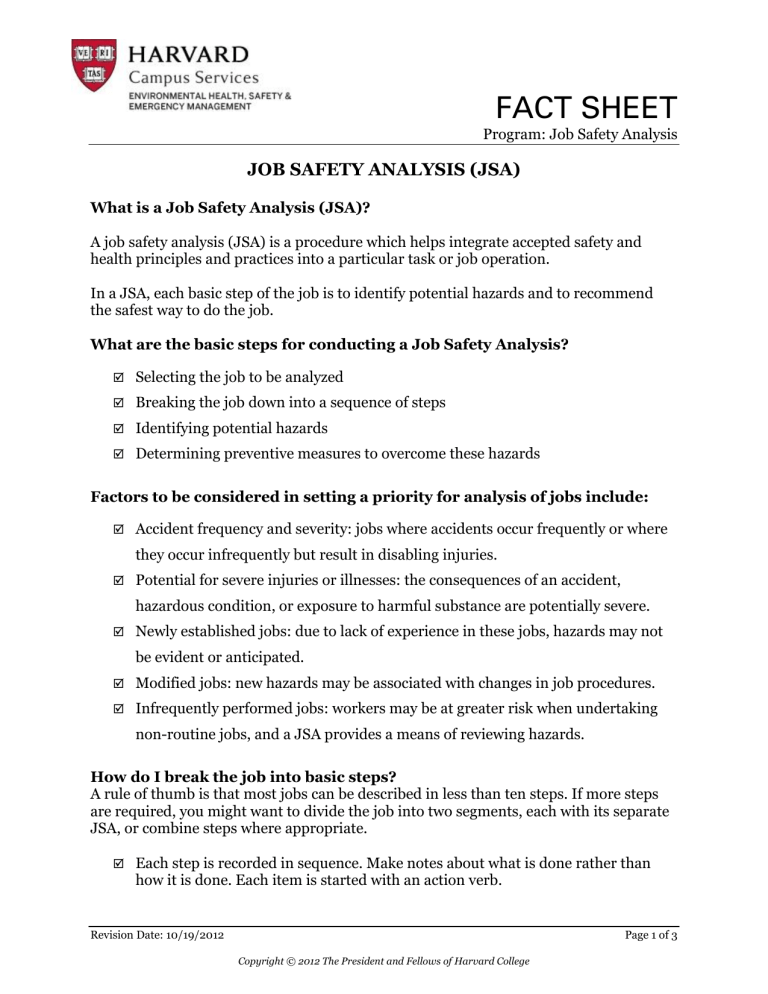
FACT SHEET Program: Job Safety Analysis JOB SAFETY ANALYSIS (JSA) What is a Job Safety Analysis (JSA)? A job safety analysis (JSA) is a procedure which helps integrate accepted safety and health principles and practices into a particular task or job operation. In a JSA, each basic step of the job is to identify potential hazards and to recommend the safest way to do the job. What are the basic steps for conducting a Job Safety Analysis? Selecting the job to be analyzed Breaking the job down into a sequence of steps Identifying potential hazards Determining preventive measures to overcome these hazards Factors to be considered in setting a priority for analysis of jobs include: Accident frequency and severity: jobs where accidents occur frequently or where they occur infrequently but result in disabling injuries. Potential for severe injuries or illnesses: the consequences of an accident, hazardous condition, or exposure to harmful substance are potentially severe. Newly established jobs: due to lack of experience in these jobs, hazards may not be evident or anticipated. Modified jobs: new hazards may be associated with changes in job procedures. Infrequently performed jobs: workers may be at greater risk when undertaking non-routine jobs, and a JSA provides a means of reviewing hazards. How do I break the job into basic steps? A rule of thumb is that most jobs can be described in less than ten steps. If more steps are required, you might want to divide the job into two segments, each with its separate JSA, or combine steps where appropriate. Each step is recorded in sequence. Make notes about what is done rather than how it is done. Each item is started with an action verb. Revision Date: 10/19/2012 Page 1 of 3 Copyright © 2012 The President and Fellows of Harvard College FACT SHEET Program: Job Safety Analysis An important point to remember is to keep the steps in their correct sequence. Any step which is out of order may miss serious potential hazards or introduce hazards which do not actually exist. How do I identify potential hazards? To help identify potential hazards, the job analyst may use questions such as these: (NOTE: this is not a totally inclusive list) Can any body part get caught in or between objects? Do tools, machines, or equipment present any hazards? Can the worker make harmful contact with moving objects? Can the worker slip, trip, or fall? Can the worker suffer strain from lifting, pushing, or pulling? Is the worker exposed to extreme heat or cold? Is excessive noise or vibration a problem? Is there a danger from falling objects? Is lighting a problem? Can weather conditions affect safety? Is harmful radiation a possibility? Can contact be made with hot, toxic, or caustic substances? Are there dusts, fumes, mists, or vapors in the air? How do I determine preventive measures?" The final stage in a JSA is to determine ways to eliminate or control the hazards identified. Do not use general statements such as "be careful" or "use caution". Specific statements which describe both what action is to be taken and how it is to be performed are preferable. The generally accepted measures, in order of preference, are: Eliminate the hazard - This is the most effective measure. These techniques should be used to eliminate the hazards: • • • Choose a different process Modify an existing process Substitute with less hazardous substance Revision Date: 10/19/2012 Page 2 of 3 Copyright © 2012 The President and Fellows of Harvard College FACT SHEET Program: Job Safety Analysis • • Improve environment (ventilation) Modify or change equipment or tools Contain the Hazard • If the hazard cannot be eliminated, contact might be prevented by using enclosures, machine guards, worker booths or similar devices. Revise Work Procedures • Consideration might be given to modifying steps which are hazardous, changing the sequence of steps, or adding additional steps (such as locking out energy sources). Reduce the Exposure • These measures are the least effective and should only be used if no other solutions are possible. • One way of minimizing exposure is to reduce the number of times the hazard is encountered. • The use of appropriate personal protective equipment may be required. To reduce the severity of an accident, emergency facilities, such as eyewash stations, may need to be provided. JSA is a useful technique for identifying hazards so that workers can take measures to eliminate or control hazards. Once the analysis is completed, the results must be communicated to all workers who are, or will be, performing that job. Revision Date: 10/19/2012 Page 3 of 3 Copyright © 2012 The President and Fellows of Harvard College
